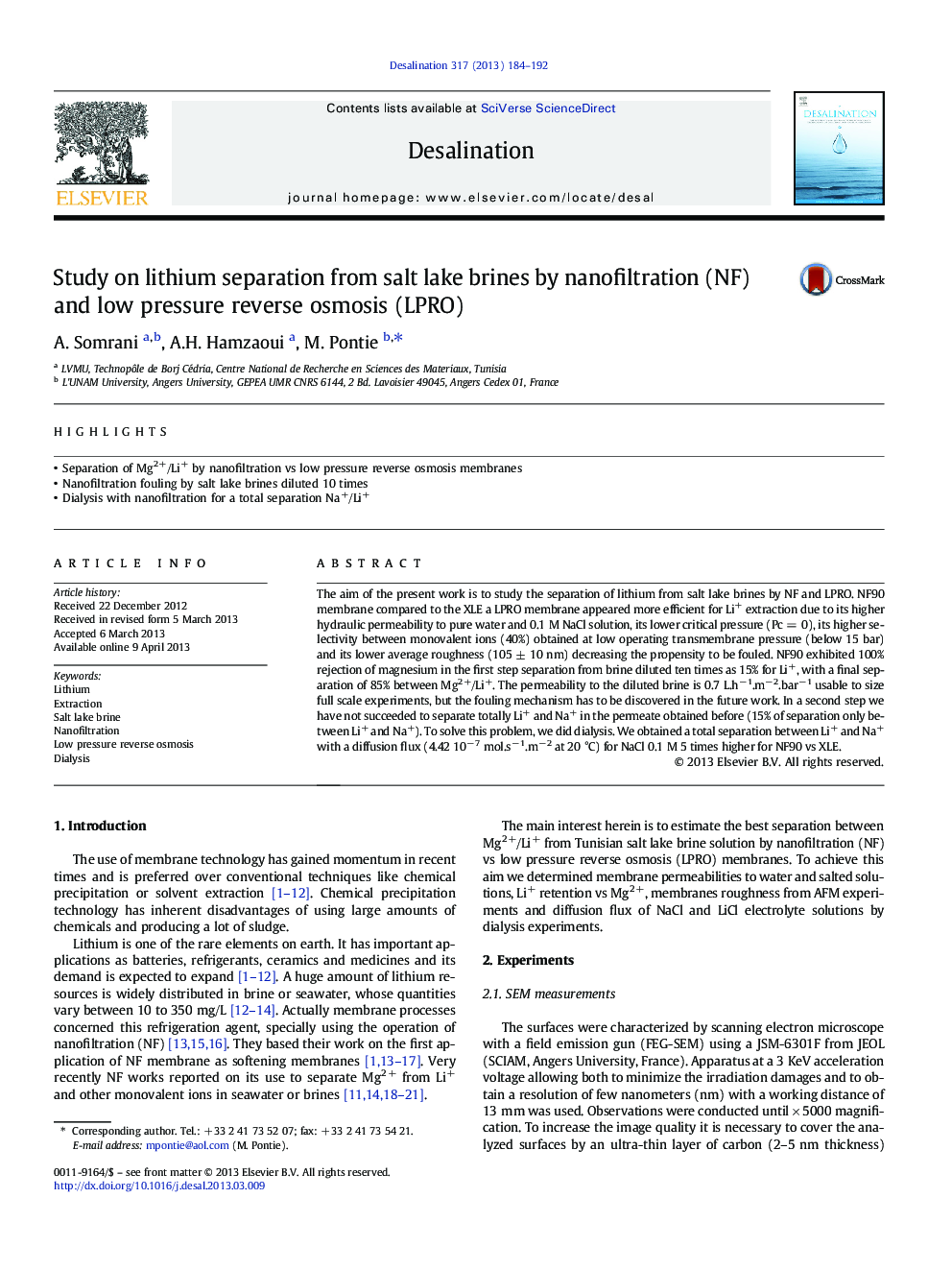| Article ID | Journal | Published Year | Pages | File Type |
|---|---|---|---|---|
| 623980 | Desalination | 2013 | 9 Pages |
•Separation of Mg2+/Li+ by nanofiltration vs low pressure reverse osmosis membranes•Nanofiltration fouling by salt lake brines diluted 10 times•Dialysis with nanofiltration for a total separation Na+/Li+
The aim of the present work is to study the separation of lithium from salt lake brines by NF and LPRO. NF90 membrane compared to the XLE a LPRO membrane appeared more efficient for Li+ extraction due to its higher hydraulic permeability to pure water and 0.1 M NaCl solution, its lower critical pressure (Pc = 0), its higher selectivity between monovalent ions (40%) obtained at low operating transmembrane pressure (below 15 bar) and its lower average roughness (105 ± 10 nm) decreasing the propensity to be fouled. NF90 exhibited 100% rejection of magnesium in the first step separation from brine diluted ten times as 15% for Li+, with a final separation of 85% between Mg2 +/Li+. The permeability to the diluted brine is 0.7 L.h− 1.m− 2.bar− 1 usable to size full scale experiments, but the fouling mechanism has to be discovered in the future work. In a second step we have not succeeded to separate totally Li+ and Na+ in the permeate obtained before (15% of separation only between Li+ and Na+). To solve this problem, we did dialysis. We obtained a total separation between Li+ and Na+ with a diffusion flux (4.42 10− 7 mol.s− 1.m− 2 at 20 °C) for NaCl 0.1 M 5 times higher for NF90 vs XLE.
